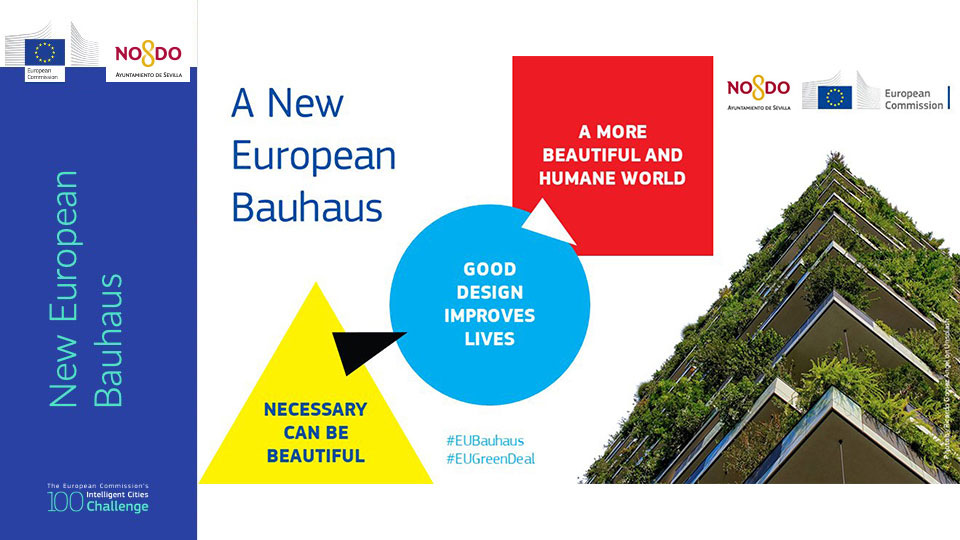4th February 2021 | New Bauhaus | Forecasting
Why the Green New Deal needs culture and design; Three myths of forecasting
Welcome to Just Two Things, which I try to write daily, five days a week. Some links may also appear on my blog from time to time. Links to the main articles are in cross-heads as well as the story.
#1: The New Bauhaus
The EU President Ursula von Leyen has been talking up the idea of “the New Bauhaus” recently, as a way of framing the innovation challenges of the post-carbon transition:
The European Green Deal must also - and especially -– be a new cultural project for Europe. Every movement has its own look and feel. And this systemic change needs its own aesthetics - blending design and sustainability. This is why we will launch a new European Bauhaus movement - a collaborative design and creative space, where architects, artists, students, scientists, engineers and designers work together to make this vision a reality.
Obviously she’s referencing here the old Bauhaus—the iconic German design school and studio, which attracted talent from all across Europe before it was closed by the Nazis in 1933.
The urbanist Dan Hill has joined in this discussion with an article on his Medium account (may need registration) in a spirit of constructive engagement, and a longer paper (attached to his Medium article but also available as a pdf), written with Rowan Conway, Christian Bason, and Mariana Mazzucato.
This note is from the article:
As I had heard that the starting point for the New Bauhaus conversations were relatively limited to new construction technologies, I felt it should reorientate and open up around some key dynamics: retrofit rather than new-build; care and maintenance; more-than-human-centred design; governance reform; transdisciplinary approaches; participative collaboration; a social and cultural agenda rather than narrow economic or technological one, and so on. Each outlines some notes to hit regarding Europe’s past, present and future possibilities.
In the longer paper, they suggest that the “new Bauhaus” idea can be an “intellectual, cultural and practical snowplough”, in three ways (their emphasis):
The imaginative capacity of design, art, and architecture actively creates possible futures. making tangible and motivating the numerous diverse and complex scenarios implicit in the Green Deal.
The New Bauhaus can help develop a widespread literacy and toolkit for design, architecture, technology and culture at all levels, creating better clients and collaborators as well as better designers.
Thirdly, the New Bauhaus can help re-work the cultures that shape public life, such that our public and civic institutions are capable of equitably delivering resilient, healthy, vibrant and culturally rich technologies, infrastructures, cultures and places.
There’s much more, but one of my thoughts about the idea of ‘the New Bauhaus’—as with the underdeveloped but resonant idea of “the 15-minute city”—was about the power of metaphor to open up more radical conversations about the future. Perhaps the plodders running the British Labour Party at the moment could take notice.
#2: Forecasting fallacies
The insurer Swiss:Re has published a short piece on three fallacies about forecasting under conditions of uncertainty that is worth sharing quickly here. With the proviso that forecasting has a terrible track record and usually works only over the short term and in placid market or contextual conditions.
Myth 1: Forecasting models should become more complex as uncertainty rises
“In forecasting, complex models like machine learning (ML) methods, can outperform simple models…
But… [w]e often do not know all possible outcomes and the future is usually not like the past. The apparent solution to fine-tune a model based on historic outcomes can therefore lead to more errors.” Simpler is also more transparent.
Myth 2: Machines will put human forecasters out of a job
“Human expert judgement remains superior when data is not available or insufficient, for instance, when evaluating a start-up or analysing emerging market macroeconomic trends.” But you need to watch for cognitive bias. Feedback helps.
Myth 3: Improved forecasting capabilities invariably mean better business decisions
Organisational culture and incentive systems get in the way of acting on forecasts. Business leaders are not very good at planning for “just in case” outcomes. And so on.
Their conclusion: “When it comes to decision-making in an uncharted domain, simple models and step-by-step methodologies for developing expert judgement boosted by behavioural economics can give insurers a much-needed edge when plotting the future.“
j2t#024
If you are enjoying Just Two Things, please do send it on to a friend or colleague.



